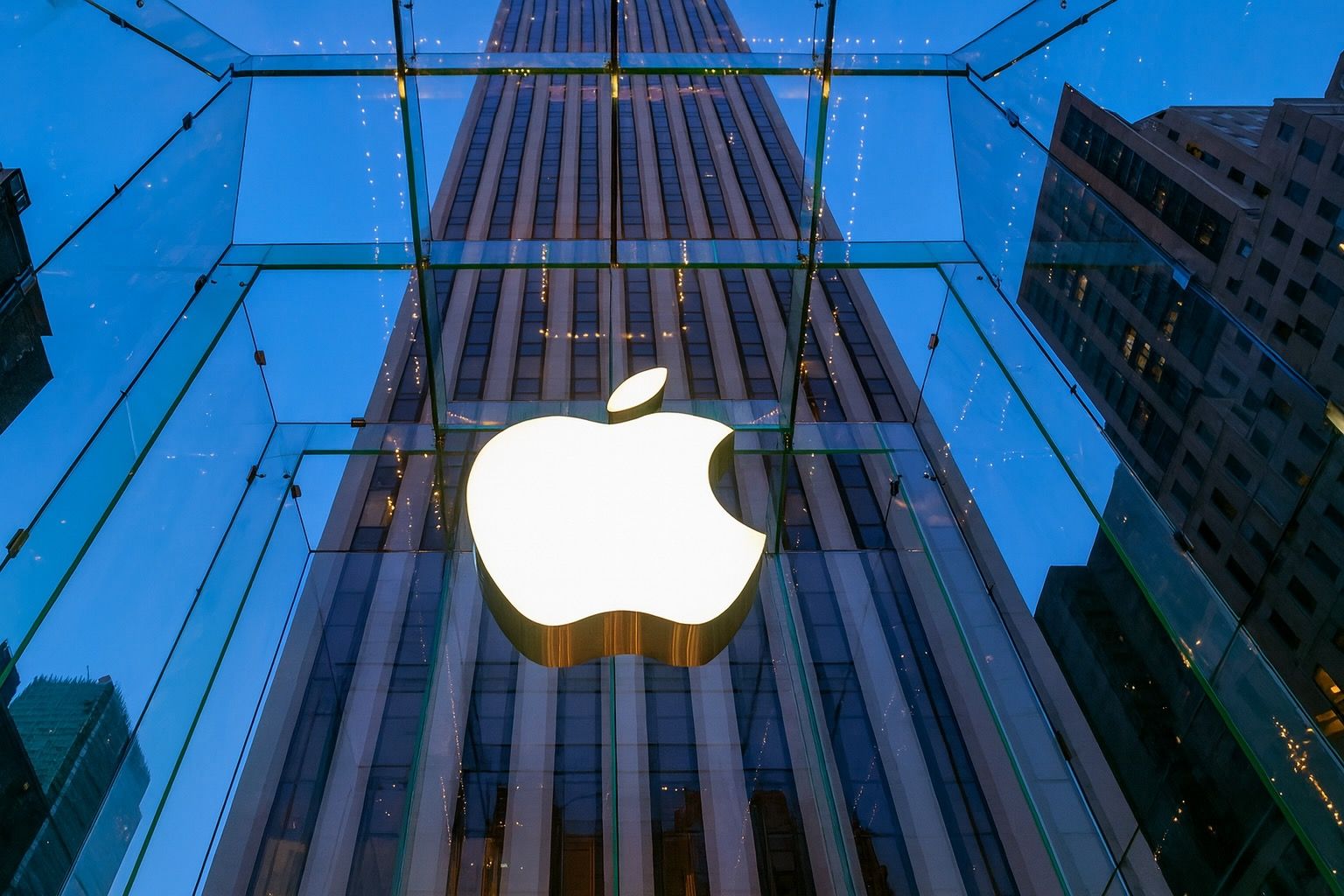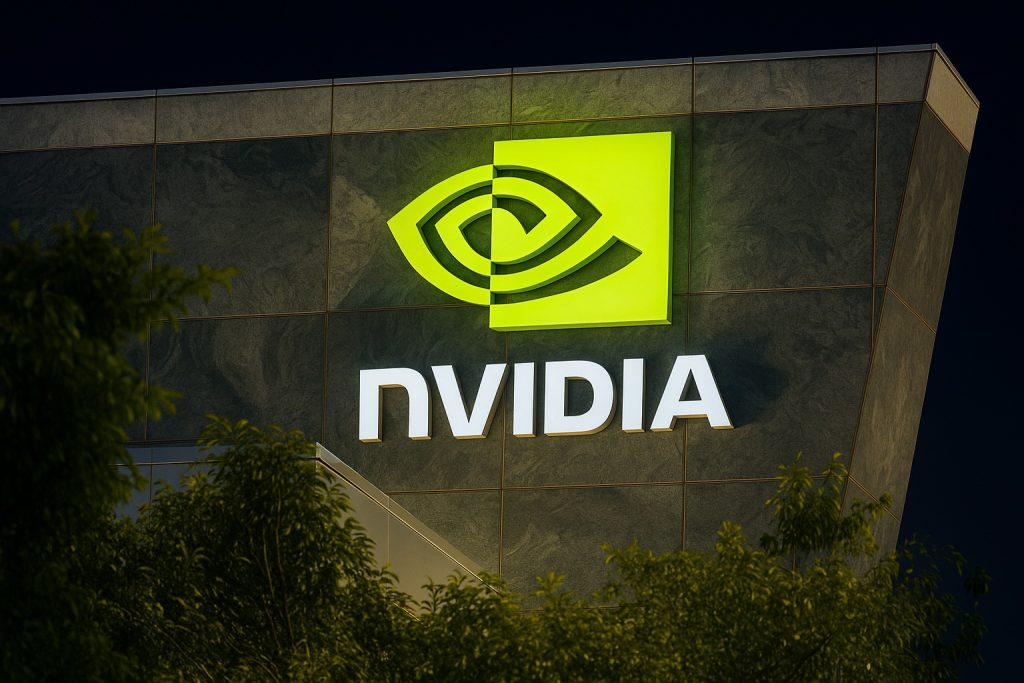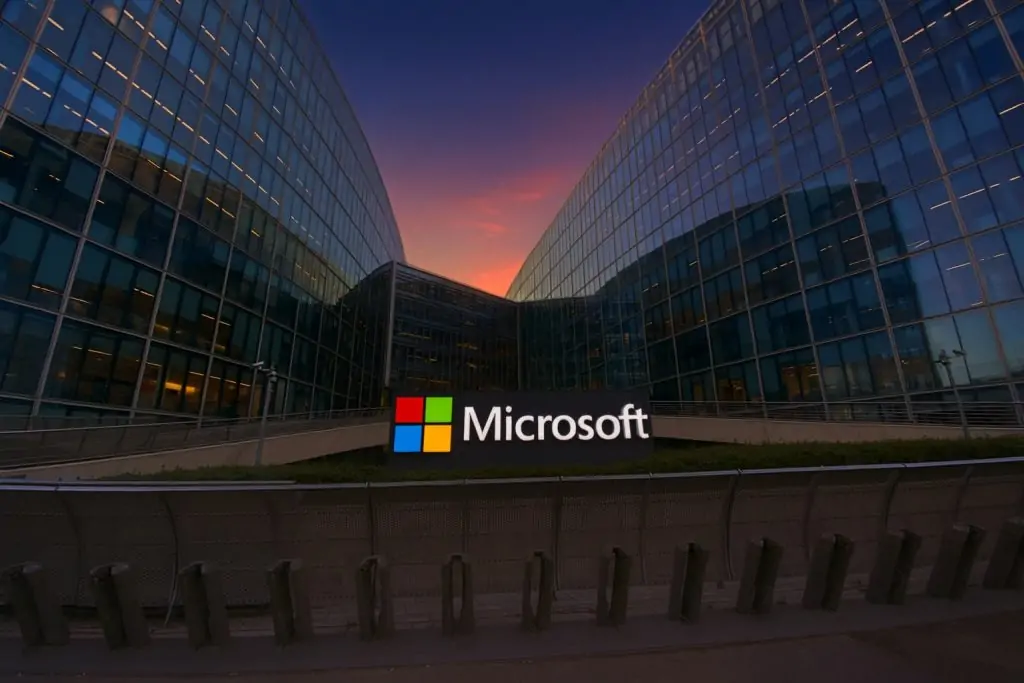Apple stock (NASDAQ: AAPL) spent Tuesday consolidating near recent highs as investors weighed record iPhone 17 momentum in China against ongoing legal and regulatory headaches around Apple Watch and environmental compliance.
Shares closed around $267.44, after trading between roughly $265.3 and $270.7, with more than 40 million shareschanging hands — essentially flat versus Monday’s close despite a choppy broader tech tape. [1]
At the same time, a flood of fresh headlines on November 18, 2025 — from explosive iPhone 17 sales in China to updates in the Masimo lawsuit and an EPA settlement — kept Apple firmly in the news cycle and on traders’ screens. [2]
Apple stock today: how AAPL traded on November 18, 2025
According to exchange and historical data, Apple opened Tuesday’s session just under $270, pushed as high as about $270.70, dipped to an intraday low near $265.32, and finished at $267.44. [3]
That close leaves AAPL:
- Essentially unchanged versus Monday (a move of only a few cents).
- Still not far below recent record highs set after Apple’s strong fiscal Q4 report at the end of October. [4]
After-hours trading stayed calm. On retail brokerage platform Public.com, Apple was quoted around $267–268 on light volume late Tuesday, hovering within a fraction of a percent of the regular-session close. [5]
In other words: no big price fireworks today — but plenty of fundamental news that could matter for where AAPL goes next.
China’s iPhone 17 boom is the day’s biggest positive catalyst
The most market-moving fundamental headline for Apple today came from China.
A Reuters report showed that Apple captured 25% of China’s smartphone market in October, meaning one in every four phones sold in the country was an iPhone. Unit sales jumped 37% year on year, driven by strong demand for the iPhone 17 series, with all three variants posting mid‑ to high‑double‑digit growth. [6]
Key takeaways from that data:
- Apple hasn’t held this kind of share in China since 2022.
- More than 80% of Apple’s China unit sales came from the new iPhone 17 lineup, according to Counterpoint Research. [7]
- Rising average selling prices for iPhone 17 could amplify revenue growth even if unit growth slows later in the cycle. [8]
Investopedia’s morning market briefing highlighted Apple as a rare bright spot in pre‑market trading, pointing to a 37% year‑over‑year jump in iPhone sales in China and calling out the iPhone 17 cycle as the company’s strongest in the region in three years. [9]
This China data neatly reinforces what Apple already signaled in its fiscal Q4 2025 earnings:
- Revenue: $102.5 billion, up 8% year over year.
- EPS: $1.85, a September‑quarter record, beating Wall Street forecasts. [10]
- iPhone revenue: about $49 billion, up 6%, even though iPhone 17 had only a short selling window in that quarter. [11]
- Services revenue: roughly $28.7 billion, up 15%, hitting an all‑time high. [12]
Management guided for 10–12% revenue growth in the December quarter, implying a potential record holiday seasonpowered by the iPhone 17 cycle and services. [13]
Today’s China numbers make that bullish guidance look more credible — which helps explain why Apple stock is holding up even as some other mega‑cap tech names wobble.
Apple as a relative safe haven while AI high‑flyers sell off
A widely cited MarketWatch column published today argues that what once looked like Apple’s big weakness — slower, more cautious spending on artificial intelligence infrastructure — is now turning into a strength in the current market environment. [14]
According to the piece:
- AI‑heavy peers like Microsoft, Nvidia, Amazon, Tesla and Meta have come under pressure as investors question the sustainability of massive AI‑related capex and stretched valuations. [15]
- Apple, by contrast, is not being treated as an “AI stock”, so it has largely avoided the most violent parts of the AI‑driven sell‑off.
- Analyst Gil Luria of D.A. Davidson notes that Apple’s limited exposure to the current AI spending cycle has helped its shares show relative resilience versus other mega‑caps. [16]
Despite this defensive positioning, Apple still has credible growth drivers in the near term:
- A strong iPhone 17 replacement cycle, especially in China. [17]
- Double‑digit growth in high‑margin services like iCloud, Apple Music, Apple TV+ and AppleCare. [18]
That combination — “less AI risk, still plenty of growth” — is a big part of why AAPL has outperformed the Nasdaq Composite and S&P 500 since early November, even after today’s quiet session. [19]
Legal and regulatory risks stay on the radar
Not everything in Apple’s news flow today was positive. Two key risk themes resurfaced: Apple Watch patent litigationand environmental compliance.
1. The Masimo verdict and potential Apple Watch import issues
Coverage from Reuters, TechCrunch, 9to5Mac and other outlets has been building over the past few days around a $634 million jury verdict against Apple in its long‑running dispute with medical device company Masimo. [20]
Key points:
- A federal jury in California ruled that Apple’s blood‑oxygen (SpO₂) features in Apple Watch infringe a Masimo patent, awarding $634 million in damages. [21]
- The U.S. International Trade Commission (ITC) has opened a new proceeding to determine whether redesigned Apple Watch models still infringe Masimo’s IP, raising the risk of fresh import restrictions. [22]
- Commentary today from outlets like TidBITS and BioWorld emphasises that the case is part of a broader pattern of litigation between the two companies and could continue for years through appeals. [23]
In pure dollar terms, $634 million is small relative to Apple’s annual net income — the company earned roughly $27.5 billion in Q4 alone. [24] The real threat is product disruption if the ITC ever re‑imposes or broadens an import ban on Apple Watch models with blood‑oxygen features in the U.S.
So far, investors appear to see this as manageable but worth watching, rather than thesis‑breaking.
2. EPA settlement over hazardous waste management
On the environmental front, the U.S. Environmental Protection Agency announced today that it has reached a settlement with Apple over alleged violations of federal hazardous‑waste rules at a facility on Scott Boulevard in Santa Clara, California. [25]
According to the EPA:
- Apple has corrected issues related to hazardous‑waste storage and air emissions at the site and is now in compliance with the Resource Conservation and Recovery Act (RCRA). [26]
- The company agreed to pay a civil penalty of $261,283 and implement operational improvements. [27]
Financially, this fine is immaterial for a $3‑plus‑trillion company. But in an era when ESG metrics matter to many institutional investors, high‑profile regulatory actions can still influence perception of Apple’s environmental and compliance track record.
Ecosystem updates: Watch manufacturing, podcasts, and Vision Pro
Beyond the headline stock and legal stories, Apple and its partners pushed out several ecosystem updates today that matter for the company’s long‑term positioning.
1. 3D‑printed titanium Apple Watch cases
In a detailed Apple Newsroom feature dated November 18, Apple highlighted how it is now using 3D printing to produce every titanium case for Apple Watch Ultra 3 and titanium Apple Watch Series 11, using high‑quality recycled metal powder. [28]
The article notes that 3D printing:
- Significantly reduces raw‑material usage versus traditional milling.
- Helps support Apple’s Apple 2030 carbon‑neutrality goals by cutting waste and energy use. [29]
While this may not move earnings immediately, it shows Apple experimenting with advanced manufacturing techniques that could eventually broaden to other product lines — potentially lowering costs and boosting sustainability.
2. Apple Podcasts reveals 2025’s top shows
Another Newsroom post today saw Apple Podcasts publish its Top Charts of 2025, highlighting the year’s most‑listened and most‑shared shows globally and by region. [30]
For investors, this matters because:
- Apple’s services — including Podcasts, Music, TV+ and News+ — are now a major growth engine, with services revenue growing 15% year over year last quarter. [31]
- High engagement in content ecosystems tends to reinforce device stickiness, supporting long‑term hardware and services revenue.
It’s a subtle signal that Apple’s services flywheel is still spinning faster.
3. Vision Pro gains a new professional training use‑case
Several press releases and industry articles today highlighted a new partnership between Loft Dynamics and Trifork to create LoftHOME, an at‑home pilot‑training kit built around Apple Vision Pro. [32]
According to those releases, LoftHOME:
- Extends Loft Dynamics’ EASA‑ and FAA‑qualified helicopter simulator ecosystem into pilots’ homes and offices via Vision Pro.
- Offers a full training flow — from cockpit familiarization and procedure rehearsal to simulator sessions and debriefs — using the same software as certified full‑motion simulators. [33]
This is still niche in revenue terms, but it helps support the strategic narrative that Vision Pro can be more than an entertainment device — it can be a professional training and productivity platform, which may bolster Apple’s long‑term spatial‑computing story.
Talent and leadership questions resurface
Two other storylines hanging over Apple, and touched on again in today’s coverage, are leadership succession and talent retention.
1. Tim Cook succession chatter
Over the weekend and into today, outlets including the New York Post picked up on reporting from the Financial Timessuggesting that Apple’s board has been informally discussing a timeline for CEO Tim Cook’s eventual departure, with some speculation that a handover could happen as soon as next year. [34]
Another Yahoo Finance/FT‑based write‑up framed it as Apple accelerating internal planning for a post‑Cook era amid concerns about staying competitive in AI and new product categories. [35]
Important nuance:
- There has been no official announcement from Apple about Cook stepping down.
- Succession planning is standard for companies of Apple’s size; the mere existence of contingency plans doesn’t mean a transition is imminent.
Still, for a stock that trades at a premium multiple, anything that introduces uncertainty about leadership can affect how investors think about long‑term risk.
2. Loss of the “iPhone Air” designer to an AI startup
Separately, 9to5Mac reported that Abidur Chowdhury, the industrial designer credited with introducing the iPhone Airat Apple’s September event, has left the company for an unnamed artificial‑intelligence startup. [36]
The article notes that:
- Chowdhury’s exit adds to a broader “brain drain” from Apple, including AI researchers jumping to companies like Meta, Anthropic and OpenAI.
- The design organization has seen departures to Jony Ive’s former design group, now tied to OpenAI, as well as other high‑profile moves. [37]
One resignation doesn’t change Apple’s investment case, but sustained talent outflows in AI and industrial design could, over time, feed concerns that Apple might be slower to define the next big product category.
Institutional flows: big holders stay, some smaller funds take profits
On the institutional‑ownership front, several MarketBeat filings dated November 18 detail how different funds are repositioning around Apple.
Highlights:
- International Assets Investment Management LLC lists Apple as its second‑largest position, underscoring the stock’s role as a core holding for many wealth‑management platforms. [38]
- Smaller managers such as Goldstein Advisors LLC, Flavin Financial Services, and Violich Capital Management reported trimming their Apple stakes by around a quarter or more in recent quarters, often citing portfolio rebalancing rather than a change in thesis. [39]
Net‑net, institutional ownership of Apple remains very high, but today’s disclosures show some investors locking in profits after the stock’s strong run since early November.
Valuation check: still expensive, but many see mild upside
A fresh valuation note from Simply Wall St, published November 18, pegs Apple’s “fair value” at about $281 per share, versus a current price around $267–268, implying that AAPL is roughly 4–5% undervalued on their narrative‑driven model. [40]
That analysis points to:
- Sustained, double‑digit growth in Apple’s high‑margin services ecosystem.
- Continued strong cash generation and shareholder returns through buybacks and dividends. [41]
However, they also note that Apple trades at roughly 35x earnings, well above the broader U.S. tech‑sector average (around 22x), which means expectations are already high. [42]
Other datapoints:
- One widely cited consensus from 29 Wall Street analysts puts the 12‑month target price for Apple around $275–276, only a few percent above today’s level, with an overall “Buy” rating. [43]
- Recent research notes show major banks raising their Apple targets after Q4 earnings:
The bottom line on valuation:
Apple is priced like a high‑quality compounder, not a bargain. Most analysts see modest upside from here, with the bull case hinging on the iPhone 17 cycle, services growth, and a credible AI and spatial‑computing roadmap.
What to watch next for Apple stock
Looking beyond today’s relatively quiet price action, here are the key catalysts Apple investors will be watching over the coming weeks:
- Holiday‑quarter demand data
- Sell‑through trends for iPhone 17, Watch and Macs over Thanksgiving, Singles’ Day spill‑over and Christmas.
- Any early signs that China’s October strength is continuing into November and December. [46]
- Masimo appeal and ITC review
- Whether Apple can successfully appeal or narrow the $634 million verdict.
- Outcomes from the ITC’s renewed look at Apple’s blood‑oxygen workaround, which could affect future U.S. Apple Watch sales. [47]
- Further regulatory and ESG developments
- Follow‑through on environmental compliance improvements after today’s EPA settlement. [48]
- Leadership and talent headlines
- Updates on Vision Pro and services
Final word (and a quick disclaimer)
For November 18, 2025, Apple stock essentially took a breather: price action was quiet, but the news around the company was anything but.
- Bullish side: record‑setting iPhone 17 momentum in China, strong Q4 fundamentals, expanding services and fresh Vision Pro use‑cases. [53]
- Bearish / risk side: the Masimo verdict and ITC review, an EPA settlement, persistent questions about long‑term innovation and leadership succession, and a valuation that already assumes a lot is going right. [54]
For traders and long‑term investors alike, AAPL remains a high‑quality but closely watched name, where every new data point — from China sales to courtrooms to cutting‑edge manufacturing — can shift the narrative at the margin.
This article is for informational purposes only and does not constitute investment advice, a recommendation, or a solicitation to buy or sell any security. Always do your own research or consult a licensed financial adviser before making investment decisions.
References
1. finance.yahoo.com, 2. www.reuters.com, 3. finance.yahoo.com, 4. www.apple.com, 5. public.com, 6. www.reuters.com, 7. www.reuters.com, 8. www.reuters.com, 9. www.investopedia.com, 10. www.apple.com, 11. www.investors.com, 12. www.investors.com, 13. www.investing.com, 14. www.marketwatch.com, 15. www.marketwatch.com, 16. www.marketwatch.com, 17. www.reuters.com, 18. www.apple.com, 19. www.marketwatch.com, 20. www.reuters.com, 21. www.reuters.com, 22. www.reuters.com, 23. tidbits.com, 24. www.investing.com, 25. www.epa.gov, 26. www.epa.gov, 27. www.epa.gov, 28. www.apple.com, 29. www.apple.com, 30. www.apple.com, 31. www.investors.com, 32. trifork.com, 33. trifork.com, 34. nypost.com, 35. finance.yahoo.com, 36. 9to5mac.com, 37. 9to5mac.com, 38. www.marketbeat.com, 39. www.marketbeat.com, 40. simplywall.st, 41. simplywall.st, 42. simplywall.st, 43. stockanalysis.com, 44. www.marketscreener.com, 45. www.sahmcapital.com, 46. www.reuters.com, 47. www.reuters.com, 48. www.epa.gov, 49. nypost.com, 50. 9to5mac.com, 51. trifork.com, 52. www.investors.com, 53. www.reuters.com, 54. www.reuters.com







